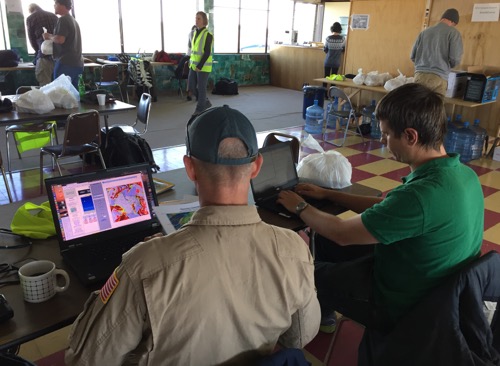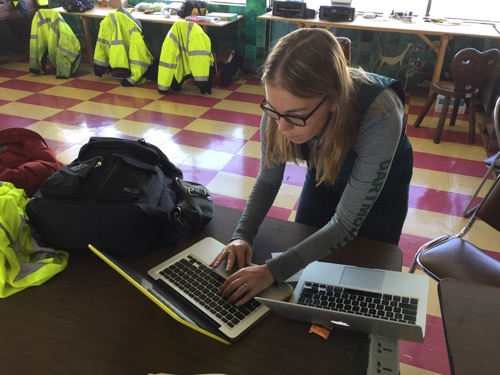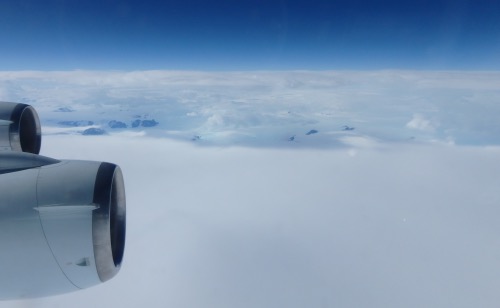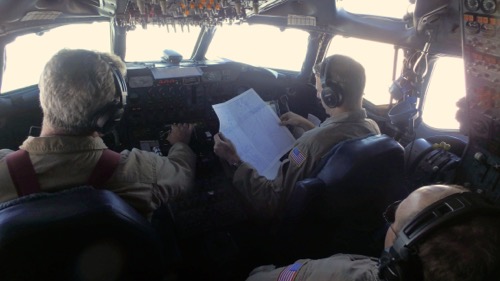Time to Take Off!
I awoke for my first day flying with Operation IceBridge excited to get onboard. Breakfast at 700 hours was a beautiful spread filled with breads, eggs, toast, and fruit. It was easy to stock up and prepare for the day. Sitting with team members at a meal is a great way to figure out what data they hope to collect that day. A 30 minute drive to the airport brought us to the morning briefing, and a safety training on the plane for us new folks. 

Seeing Antarctica
After crossing the Drake PassageStrait, connecting the Atlantic and Pacific oceans between Tierra del Fuego and the South Shetland Islands. Located about 100 mi (160 km) north of the Antarctic Peninsula, it is 600 mi (1,000 km) wide. (separates Chile from the Antarctic Peninsula), the clouds rolled in. About an hour later, I got my first glimpse of Antarctica, which was as dramatic as I had imagined it would be. Black snow blanketed peaks and ridges appeared out of the clouds, with bright blue glaciers streaming down the sides. Soon enough the clouds recovered our view, and we continued our flight over the white. 
After about 2.5 hours of flying near 30,000 feet, we approached today's target area. We were working along transect lines studied in the past, and this flight's data will offer the scientists a comparative look at the Filchner Ice Shelf and Recovery GlacierA mass of ice that persists for many years and notably deforms and flows under the influence of gravity. this year, vs previous years. The target area is located northwest of the Shackleton Range and Recovery GlacierA mass of ice that persists for many years and notably deforms and flows under the influence of gravity.. Apparently, in 1957, the first British Expedition to the area had problems losing their vehicles in cravasses on the glacier, and had lots of equipment to recover. 
Flying at 1,400 feet above the ice is a serene and magical experience. Skimming the surprisingly varied surface of the ice for several hours of data collection felt like we were in a glider, able to lazily reach out and touch the surface as though floating on a lake. While the plane will not bank more steeply than 15 degrees, so the GPSA Global Positioning System (GPS) is a satellite-based navigation system used to track the location or position of objects on the Earth’s surface. antenna on the roof can stay within "sight" of satellites at all times, we do run a back and forth style of transect that requires some tight turns. One turn also included the steep mountainous terrain of the Shackleton Range, requiring us to climb quickly. Flying just over the mountains was thrilling! What a sight! 



Comments